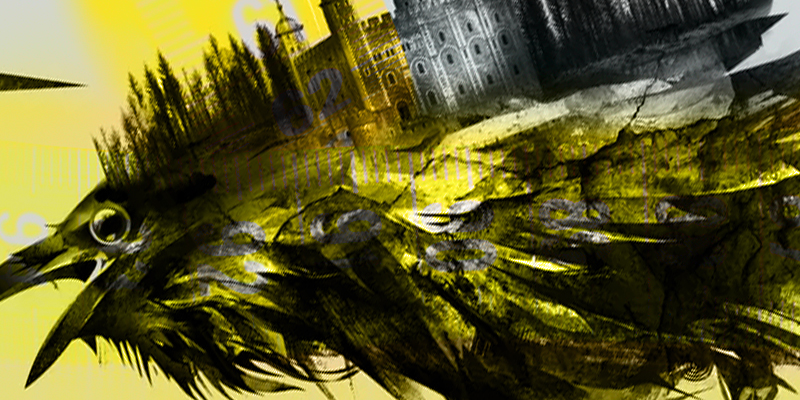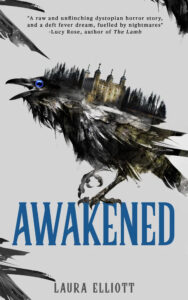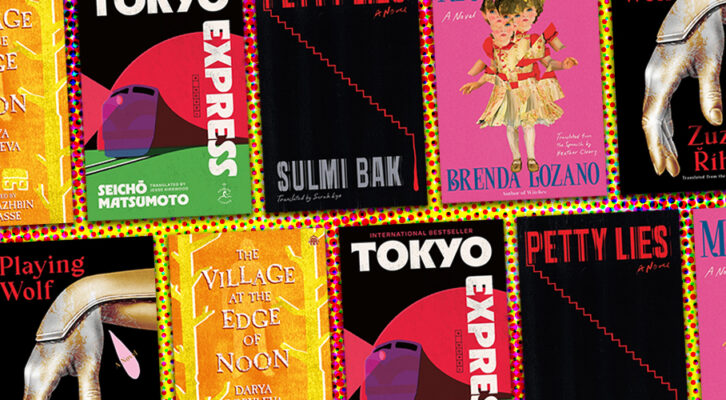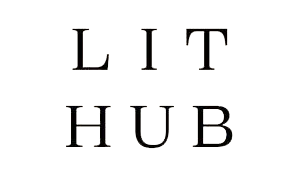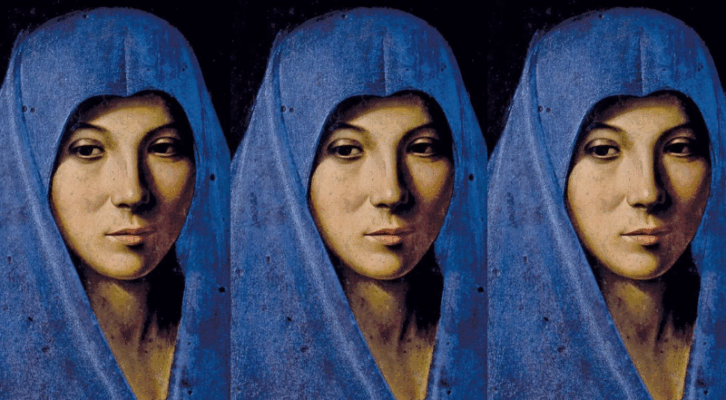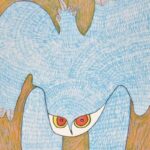“Why do you love horror so much?”
It’s perhaps the question every horror writer dreads being asked the most, yet it happens with alarming frequency. Recently, this question was asked by my mum, a woman who, by her own admission, “doesn’t like anything that couldn’t be real”. Nevertheless, a couple of months ago she gamely read an advance copy of my debut horror novel, Awakened, and then called to ask me: why?
It was a question I’d expected, and on that afternoon, phone in hand as I reorganized my kitchen cupboards, my first impulse was to reassure her that my fascination with horror came from a desire to understand the darker impulses of humanity, rather than because I harbored any disturbing proclivities towards violence myself.
However, after I hung up the call, I began to think a little more deeply about why horror has always drawn me in. What is it about this particular genre that keeps on pulling me back?
Certainly, as a disabled woman, on the face of it horror isn’t the easiest genre to find a comfortable home in. It’s a place where disability is often used as a lazy “narrative prosthesis”—or visual shorthand—for moral or social decay. Where women suffer gratuitously, and sometimes sexually, at the hands of monstrous men.
But to dismiss horror as merely a space of suffering is, to my mind, just as lazy as to dismiss fantasy as purely escapist or romance as only frivolous. Yes, where we find monsters we may also discover suffering, but given care in their construction, we may also find understanding. It all depends on how we build them.
The power of abjection
Horror stories aren’t just the stuff of frivolous scares. They’re the way that a culture safely explores and confronts both personal and societal fears. More than this, though, they’re where we identify and also create what we’re most afraid of. Horror not only illuminates what already frightens us, but it may also influence our terrors as well — and people from marginalised communities already know this intuitively.
To look back through the (western) history of the horror genre is to examine both fear and prejudice. Count Dracula, for instance, comes from the “backwards” Eastern Europe and infiltrates the “civilised” west, immediately targeting the pure and innocent Lucy and turning her into a fallen woman via her descent into wanton vampirism.
In the construction of his monster, Stoker plays on the Victorian ideals of his time: the fear of western civility being lost to outside “barbarism”, and the common colonial terror of white women being stolen, corrupted, or otherwise-tainted by an invading man or men. Dracula isn’t just Other just because he drinks blood. He is Other because he comes from outside the approved society and brings violence with him—as well as, for Lucy, an overtly-sexual awakening.
This construction of monstrosity relies on the notion of the abject, which literary scholar Julie Kristeva defines as something that moves beyond the simply uncanny, into something which disrupts the established order and so threatens a sense of identity and meaning. The abject is the thing that jeopardises the borders of self and society. It challenges the boundary between what is Us and Not Us, forcing who we are into battle against something that we are not.
The building of a monster operates at the border, and it is, above all else, revealing. The monster asks not just what are you afraid of, but who and why?
Dracula is abject because he is from beyond society’s border; he pierces the borders of the skin to pass forth an infection; and with the infection delivered to Lucy, she herself becomes abject. Not only because she’s become dangerous—a physical threat in the truest sense—but because she no longer upholds the Victorian ideals of feminine chastity and virtue.
Of course, from another perspective, he has simply made her more powerful, allowing her to transgress the boundaries of approved feminine behavior—and this is the crux of my fascination with the horror genre. What is abject is not always the same as what is evil; what is solid and seems unchangeable is not always the same as what is good. Where there is abjection, there is also challenge. Where there is abjection, there may also be power.
Sickness and the Monstrous Feminine
In her ground-breaking work on the seven faces of the monstrous feminine, Barbara Creed argues: “that which crosses or threatens to cross the border is abject,” and then goes further, arguing that the function of a monster is always to “bring about an encounter between the symbolic [established] order and that which threatens its stability”.
In the dominant patriarchal social order, this abjection is often coded as feminine in origin, but also as disabled or in some way, sick. In fact, in her essay on disability and feminism, Rosemarie Garland-Thomson argues that: “Western thought has long conflated femaleness and disability… both women and the disabled have been imagined as medically abnormal—as the quintessential sick ones. Sickness is gendered feminine.”
This, incidentally, isn’t a recent development. Aristotle himself defined women as “mutilated males” with “improper form”, and an example of physical “monstrosity”. When monsters are constructed in modern horror, we can still see shades of these patriarchal fears. The disfigured witch as ‘monstrous mother’ immediately springs to mind; as do the myriad female vampires whose rapacious appetites for blood are mirrored by their insatiable sexual desires.
In the patriarchal symbolic order, everything that deviates from the ‘norm’ of the hale and healthy white male is coded as abject—that is, it is definably Other. It has transgressed the approved social boundaries by being the place where power is not held. As such, the feminine monster is often marked by a dereliction in her socially-approved role as mother; by her embracing of her sexuality (or, indeed, the embracing of other women); and by her tendency to physically castrate.
When she is truly made monstrous, her profligacy is often marked by sickness or disfigurement, a tactic which is designed to evoke disgust in the male viewer, but also to draw a veil between her and the female viewer who might otherwise find some sympathy with her.
Such constructions can easily fall into stereotype, and as a disabled woman in possession of a socially-abjectified body, I can certainly think of more than a few instances where this holds true. However, they can just as effectively be used to challenge dominant modes of thought. To ask readers or viewers to interrogate why a ‘monster’ invokes their disgust or fear in the first place.
Creed argues that the true purpose of horror is to purify the abject, by bringing about a confrontation with the dominant social order which will see abjection defeated, and approved cultural boundaries reinforced.
But horror holds its greatest power, in my opinion, when those cultural boundaries aren’t reinforced, but shattered—because monstrosity may not always be situated where we first assume.
Challenging the dominant order
Famously, Mary Shelley was only nineteen when she finished writing Frankenstein, after being challenged to write a horror story during a stormy night in Geneva with her husband, Percy Shelley, John Polidori, and Lord Byron. I’ve often wanted to be a fly on the wall on that particular night, but aside from being a sci-fi horror masterpiece, Shelley’s Frankenstein is also the perfect example of a horror story that challenges the dominant social order.
Victor Frankenstein’s Monster is abjection personified. He has crossed the border between the dead and the living, being not one whole and perfect body, but a ghastly amalgamation of corpses re-animated by science. Yet, anyone who’s read Frankenstein will know that in the novel it isn’t truly the Monster that Shelley codes as monstrous; it is the society that rejects a fundamentally gentle creature for the crime of his disfigurement, and above all, Victor Frankenstein himself for abandoning his creation.
Put simply, the site of horror is not the Monster himself—it’s what is done to him that makes him monstrous. And, unsurprisingly, it’s the women in Victor Frankenstein’s family who suffer for his crime, dying one-by-one at the hands of the terrible child he rejected for being imperfect. Shelley is making a point here: that it’s the women of her society who are punished for the moral deficiencies of its men.
We see similar subversions of monstrosity throughout the history of the genre. In The Yellow Wallpaper, for instance, the horror is perceptual and so situated in two separate—and diametrically opposed—places. At the end of the story, when the doctor/husband breaks through the door to find his wife creeping madly around the room, he is terrified. Yet a reader (and a woman) already understand that he has been the threat in the story all along.
It isn’t just historical horror writers who play with where the site of horror lies. This year, Rivers Solomon’s Model Home also toyed with the setting of the haunted house. Without giving too much away, the house and its location are at fault in the many horrors that befall its Black residents — but not in the way you might think. The true dread of our society is situated elsewhere.
Ultimately, horror is a versatile genre. It can lean into prejudicial cliché and reinforce the boundaries of a culture, or it can break them apart. It can dangle a simple monster in front of us and then reveal where the real horror lies. When horror is written from the margins, it doesn’t just draw attention to our prejudices. It challenges them as well.
So, to return at last to the beginning: why do I love horror so much?
Because horror occurs at the border—but the potential for change dwells there, too.
***

